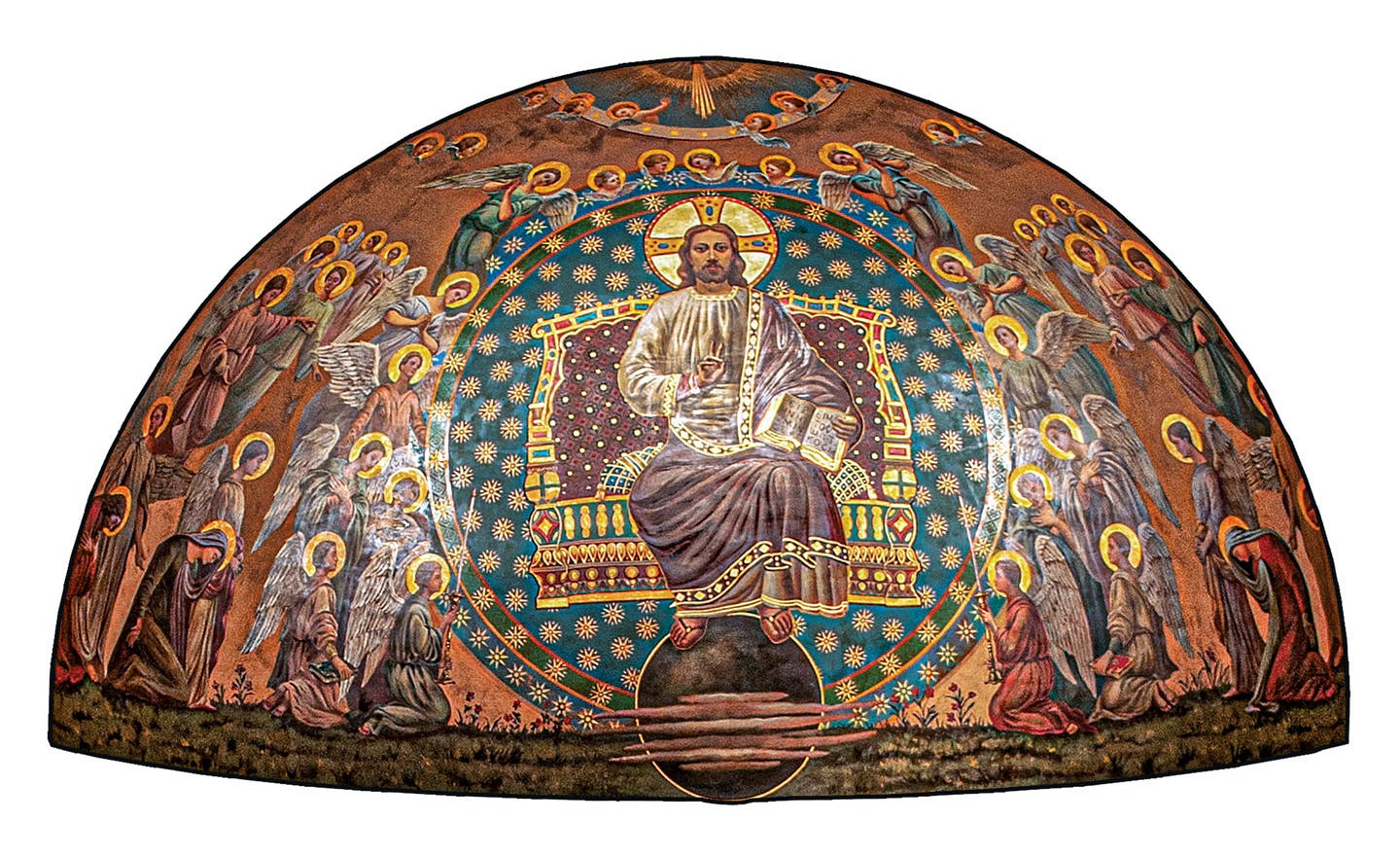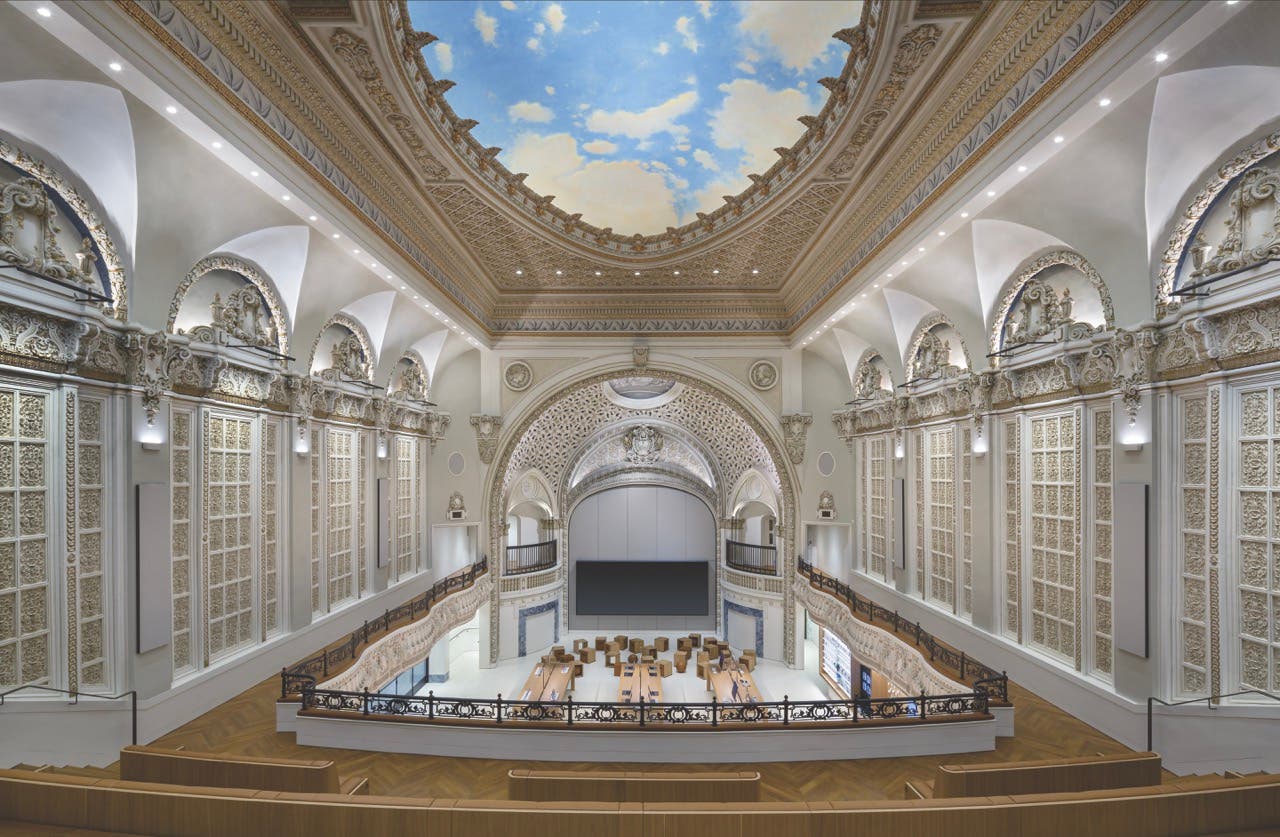
Features
Frode Rambusch, Master Decorator
Frode was born in March, 1859. His father was a Lutheran minister in central Jutland, the bleak part of Denmark. Though an ordinary student, at an early age he showed a talent for drawing. In the fall of 1875, he was accepted at the Royal Academy in Copenhagen where he studied drawing and interior decoration for five years. At the same time, he was accepted as an apprentice by Copenhagen's Master Painter, Markussen, and also worked in the drafting rooms of architect, C. V. Nielsen, working out on jobs for 6 months of the year during the good weather and the other six months in school and doing drafting in poor weather.
In 1881, having finished his apprenticeship and schooling, he began his journeyman’s travels. He worked in Dresden, Berlin, Paris, Zurich, Munich, and Vienna. While working in these cities, he usually enrolled in the local art schools, and joined the local Scandinavian social clubs. Many winters he was short of money – i.e. no food – and things were very bad for him. He had a saying: "Knowledge is more valuable in a foreign land than gold."
One winter, he and a colleague had a job painting about 1000 door panels in a hotel in Lucerne, Switzerland using a delicate fading of blue on the perimeter of the door panel to pink in the center – a very special decorative technique. He had a saying: "When you have a special project to execute, do it as perfectly as possible, and develop the ability to do it as fast as possible."
In 1888 during a Christmas visit, he became engaged to Valborg Olsen, the sister of one of his workmates in Vienna. Hendrick Olsen was a younger son of Oslo, Norway's top master painter-decorator. They decided to emigrate to New York. Frode came ahead in February of 1889 and went to work for Arnold and Locke in Brooklyn NY. Valborg followed the following year and they married in 1890.
Frode became involved in various businesses in the 1890's, the most notable of which was the redecoration of the Cincinnati German Opera House about 1896. He designed the decorative painting and fabrics and was responsible for the project. He signed for the firm, and Mark Hanna signed for the client. Frode then developed and executed a decorative scheme for the interior of the chapel at St. Michael’s Monastery in Jersey City in 1897.
His Business is Born
Then, in 1898, he started his own business which exists to this day. By 1900 he had many decorative painting projects and forty to sixty men working for him, including many Scandinavian colleagues he had met during his journeyman days. He needed help so he invited his brother-in-law, Hendrick Olsen, to come over and be his superintendent.. An early project was the decoration of St. Ann's in downtown Brooklyn, which helped build his reputation among the Catholic clergy. He had been converted to Catholicism by Rev. Alexander Patrick Doyle, CSP in 1894
As a result of the work at St. Ann's, Monsignor John Farley asked Frode to decorate his church, St. Gabriel's (now lost to the mid-town tunnel entrance). This project/client relationship resulted in a series of projects with friends of Monsignor Farley (later Cardinal Farley). One such project was at St. Raymond's in the Bronx. (The author had the pleasure of renovating this same church in 2008.) His reputation and projects took him north – to Rochester and Buffalo and Erie, south to Philadelphia and Washington, D.C. and Florida, and west to Omaha.
His style of decorating was drawn from his adaptation of the Book of Kells scrolls adding later Viking elements and employing devices developed during the "Art Nouveau” period. He was influenced by Byzantine Church Art often putting a “Pantocrator” in the apse, together with many church symbols integrated into the design. Each project was uniquely designed according to the architecture of that particular church.
His work also included hotels, museums, banks, and theatres. An early client back in the early days of the Nickelodeons on 14th Street in New York City was Adolph Zucker (later head of Paramount Theatres). This resulted in a project at the Jefferson Theatre on 14th St. a very early (c. 1912) true movie/Vaudeville Theatre with a twin theatre on the upper west side. Another ongoing relationship was developed with the Warner brothers, who built a large chain of theatres in which Rambusch Decorating Company worked into the 1950's.
The old Waldorf Astoria on 34th St. and 5th Avenue was a client. Frode said the most extravagant room he had ever worked on was the Pastry Chef's dining room, which was dripping with plaster ornament, like a wedding cake – all richly polychromed, glazed and gilded.
The author remembers two lifetimes later, working in 1948-1949 as an apprentice in the summer repainting and decorating the ballroom in the new Waldorf on Park Avenue. The air-conditioning grills were gold leafed with pure gold. When the scaffold was removed and the air conditioners were turned on; the loose gold floated throughout the ballroom – it was raining gold.
During the early days of Frode's firm, gas light was losing out as an illumination source to electric lighting. The tungsten filament lamp replaced the carbon filament about 1904. This brought about much brighter lamps which competed with Frode's decorations. After unsuccessfully trying to advise his clients on types of lighting, he started making his own units in 1908 to protect his murals and show them in the best light. This part of the firm has grown into the largest part of Rambusch today.
Frode was a great “raconteur”. As an example, the author received a phone call many years ago – late 1980's or 90's from an elderly Irish gentleman who was a member of Holy Family Church, Buffalo, who remembered sitting in the rectory kitchen as a youngster listening to Frode tell his stories about Scandinavian sagas and Irish history. This occurred when the memories of Holy Family's decorations were fading out and which now are being resurrected.
Henry Swietek works in the tradition of the old itinerant painter-decorator going from job to job. He teamed up with Rambusch at least twice with the author. Rambusch's list of works in the Buffalo area is quite extensive. The old Cathedral which is now back in use, Shea Theatre Lighting, St. Peter's Cathedral, Erie, St. Gerard's, St. John the Evangelist, etc.
Frode's two sons followed him into the firm, both working as apprentice painter-decorators in the summer. Harold went to Pratt and trained as an interior designer. Viggo went to Columbia’s School of Architecture and graduated in Architecture. Viggo's son, the author, received his Master's in Art and Architecture after his military service in Europe. He had taken his Army discharge over there and, as a union member, was able to obtain work as a painter-decorator in Copenhagen and London. His twin sons – Edwin and Martin – 4th Generation, received their Masters respectively from Parsons School of Design in Illumination and from Columbia’s Graduate School of Architecture, Planning and Preservation. They now own and run the 122 year old firm
The painter-decorator skills and traditions died out under the pressure of the “modernist” style in the 1960's and 70's when 'decoration' was painted out-white. The skills of marbleizing, graining, gilding, glazing, stenciling, pocincing, etc. were not appreciated. Today they again are practiced by scenic artists who work in the theatre and by restoration specialists such as are at work here at Holy Family. Frode died in October 1924 at 65 years of age. His work lives on, now being restored in a series of projects here in the Northeast.









